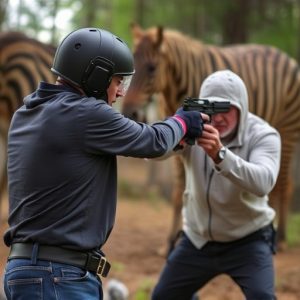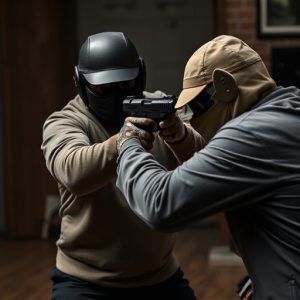Stun Weapon Projectile Range: Factors, Models, Legalities, and Real-World Applications
Selecting a concealed carry stun gun involves weighing design, power, range (5-30 feet), terrain imp…….
Selecting a concealed carry stun gun involves weighing design, power, range (5-30 feet), terrain impact, battery life, and legal constraints. Top models like Stun Master C2 and Sabre Red XL offer up to 30-foot ranges, balancing effectiveness with discretion. Legalities vary globally, with regions setting range limits for safety and licensing; users should be aware of local regulations when choosing a best concealed carry stun gun model suitable for their needs, from close-quarters combat to tactical response teams.
Stun weapons, also known as electroshock guns, offer a non-lethal self-defense option with their powerful electric charges. Understanding the projectile range of these devices is crucial for effective deployment and legal compliance. This article explores the various factors influencing stun weapon range, highlights top-performing concealed carry models, delves into legal considerations regarding range restrictions, and presents real-world use cases across different range capabilities, guiding users in choosing the best concealed carry stun gun models for their needs.
- Understanding Stun Weapon Projectile Range: Factors to Consider
- Popular Concealed Carry Stun Gun Models and Their Range Performance
- Legal Implications of Stun Guns: Range and Accessibility Rules
- Real-World Applications and Use Cases for Different Stun Weapon Range Capabilities
Understanding Stun Weapon Projectile Range: Factors to Consider
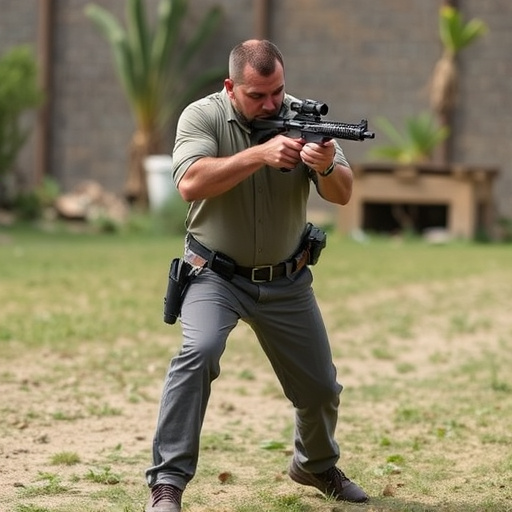
Understanding Stun Weapon Projectile Range involves considering several key factors, especially when it comes to best concealed carry stun gun models. The primary determinant is the weapon’s design and power source—electric current, chemical agents, or mechanical impact. Each type has unique advantages and limitations in terms of range. For instance, electric stun guns typically offer a shorter effective range, often between 5 to 20 feet, due to their reliance on direct contact or line-of-sight activation. On the other hand, chemical spray stun devices can reach further, usually up to 30 feet, but their effect is less focused and depends on wind conditions.
When assessing range, terrain plays a significant role. Obstacles like walls, trees, or buildings can significantly reduce the effective distance of a stun weapon. In open areas, projectiles can travel farther, but real-world scenarios often involve complex environments where range needs to be adjusted accordingly. Additionally, factors such as battery life and reload time should be considered, especially for concealed carry devices intended for self-defense situations that require quick access and repeated use.
Popular Concealed Carry Stun Gun Models and Their Range Performance
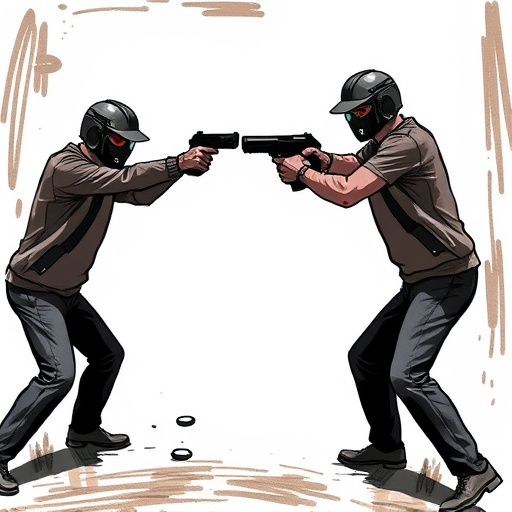
When it comes to choosing a concealed carry stun gun, several models stand out as popular choices among users looking for both effectiveness and discretion. These best concealed carry stun gun models offer impressive range capabilities, ensuring users can maintain a safe distance during self-defense situations.
One prominent model is the Stun Master C2, renowned for its compact design and powerful 12 million volt output. It boasts an effective range of up to 30 feet (9 meters), making it ideal for close encounters. Another highly rated option is the Sabre Red XL, featuring a robust 15 million volt charge and a range of around 25 feet (7.6 meters). This stun gun’s durable construction and advanced technology make it a favorite among those prioritizing both performance and reliability in their self-defense tool.
Legal Implications of Stun Guns: Range and Accessibility Rules
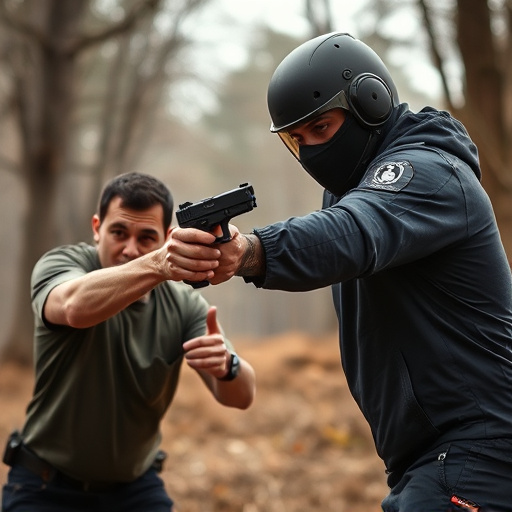
The legal landscape surrounding stun guns varies widely across jurisdictions, with each region having its own set of regulations regarding their use and possession. These laws often consider factors like range, accessibility, and specific requirements for concealed carry permits. For instance, some states allow stun guns to be carried openly, while others restrict them to concealed carry only, with additional licensing needs. The best concealed carry stun gun models are designed with these legal considerations in mind, offering a balance between effectiveness and compliance.
Range limitations play a significant role in legal implications. While many stun guns have an advertised range of up to 20 feet or more, actual effective range can be affected by factors like weather conditions, angle of discharge, and the user’s skill level. Some jurisdictions set specific range limits for stun guns carried concealed, ensuring public safety and reducing the risk of accidental discharges. Understanding these rules is crucial when choosing a stun gun model, especially among the best concealed carry options available in the market.
Real-World Applications and Use Cases for Different Stun Weapon Range Capabilities
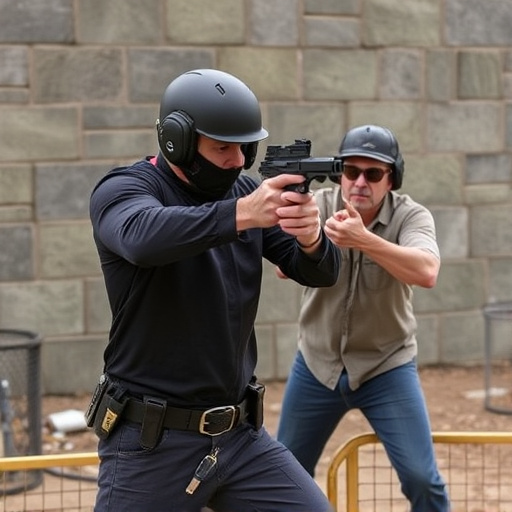
In real-world scenarios, stun weapons with varying range capabilities cater to diverse needs and use cases. For personal defense enthusiasts and concealed carry permit holders, compact and lightweight stun guns designed for close-quarters combat are popular choices. These best concealed carry stun gun models often feature non-lethal force options with a short range, typically around 2–5 meters, allowing users to disable an attacker without causing permanent harm. This proximity ensures the user has time to escape or seek help.
For law enforcement agencies and security professionals, stun weapons with extended reach provide tactical advantages. Mid-range models, ranging from 10 to 20 meters, are useful for controlling crowds or neutralizing threats at a distance. These tools can be employed in high-risk situations, such as riot control or securing crowded venues. Longer-range stun devices, often exceeding 25 meters, find applications in specialized units like tactical response teams, offering them a strategic edge during critical incidents.
Stun weapons, with their varying projectile range capabilities, offer individuals valuable self-defense options. Understanding the factors influencing range, examining top-performing models like the best concealed carry stun gun models available, and navigating legal restrictions are essential steps for responsible ownership. The real-world applications of these devices demonstrate their potential to enhance personal safety in diverse scenarios. By staying informed about range capabilities and adhering to legal guidelines, users can ensure they have a reliable tool for protection when it matters most.

